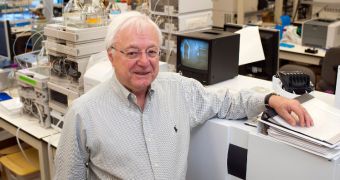The protein DJ-1 may not ring any bells in most people, but neuroscientists know it as one of the most important molecules involved in the defense mechanisms protecting our brains from disease. A subtle mutation in this protein has recently been demonstrated to promote the development of Parkinson's.
In a recent study, scientists noticed that this specific mutation led to the shutdown of a protective pathway safeguarding neurons from damage. As a degenerative disorder of the central nervous system, Parkinson's affects dopamine-generating neurons in a region of the brain called the substantia nigra.
Investigators at the Purdue University believe that new drugs could be used to target the mutated protein, thus helping maintain the protective pathway opened, and making it considerably harder for neural damage to occur. Parkinson's is a fatal condition, for which there is currently no cure.
The new study was carried out by the Purdue J.H. Law Distinguished Professor of Chemistry, Fred Regnier, and associate professor of medicinal chemistry and molecular pharmacology, Jean-Christophe Rochet. They focused their attention on observing how subtle mutations shut down DJ-1.
Unfortunately, the team discovered that it doesn't take much for the molecule to be inactivated – and the associated protective pathway along with it. Researchers say that a single substitution occurring in one of the protein's amino-acid chains is responsible for the unwanted effect.
“The saying that you are only as strong as your weakest link appears to hold true in the case of the chain of amino acids that make up a protein. The magnitude of the effect of this subtle change is surprising. It can make the difference between having a disease and being healthy,” Regnier explains.
“The current methods of treatment are to add back what the lost cells used to produce, similar to hormone replacement therapies. Understanding this error in a key protein could help researchers find a way to prevent cell death in the first place,” Rocher says.
This investigation is critically important, especially for the aging population of the developed world. According to statistics released by the Parkinson's Disease Foundation, between 7 and 10 million people suffer from this condition worldwide.
“Mass spectrometers could be used to find specific forms of DJ-1 and changes in the levels of these different forms could lead to a diagnosis of the disease. If we could find that a certain form or ratio appears early in disease development, we might be able to catch it and treat it earlier,” Regnier concludes.

 14 DAY TRIAL //
14 DAY TRIAL //